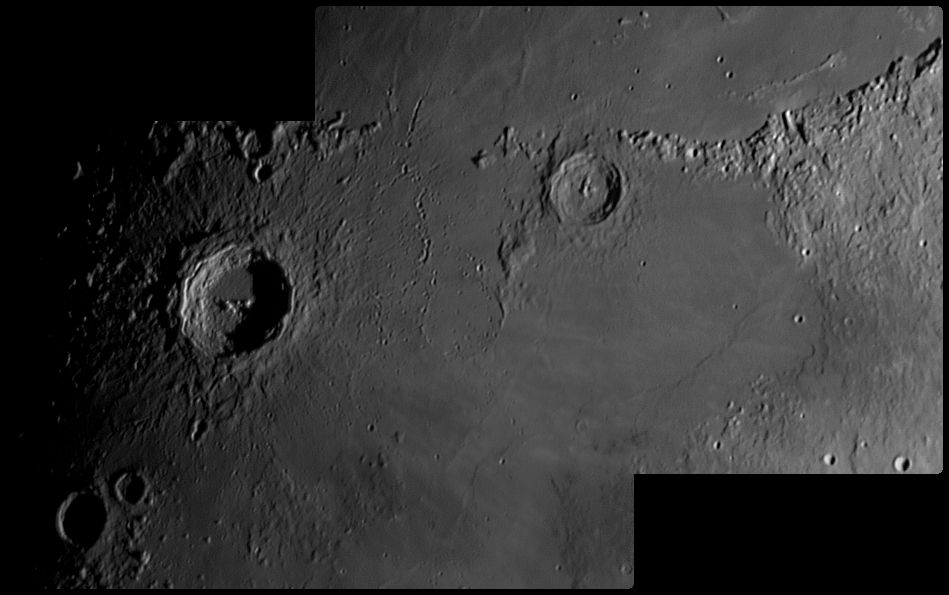

Move your mouse over the picture to see the names of the various features. An interesting feature is that these two craters give their names to two eras in lunar history. The Copernican period is from 1,100 million years ago until the present; the Eratosthenean period is from 3,200 million to 1,100 million years ago. This is a mosaic of two pictures taken when the Moon was 9.8 days old.
The craters are typical impact craters of their size (95 and 60 Km in diameter). They are less deep relative to their diameters than smaller craters, they have steep, terraced internal walls, and central mountains that are not as high as the walls. These craters post-date the surrounding mare, and so they sit on plateaus formed by the impact pushing the rock sideways. Ejected material fell back to the surface creating surrounding rubble and forming hundreds of small secondary craters. The presence of these secondary crates shows that the main craters are younger than the maria around them. In the case of Eatosthenes, the apron surrounding the crater clearly covers the trailing end of the Apennine mountains, so the crater is more recent than these.
The pictures was taken with a ToUcam attached to my LX200 on 10th December 2005 at 17:05 UT,
when the Moon was 9.8 days old.
The scale markers are approximately 100 Km north and west.
Date and Time
10th December 2005 at 17:05 UT
Camera
ToUcam 740K
Telescope
LX200 at prime focus with IR-pass filter
Capture
K3CCDTools. Low gamma, 1/33", 19% gain, 418 & 333 frames
Processing
Registax. 94 & 73 frames stacked. Wavelets 1 = 10
Home Back to NW Quadrant